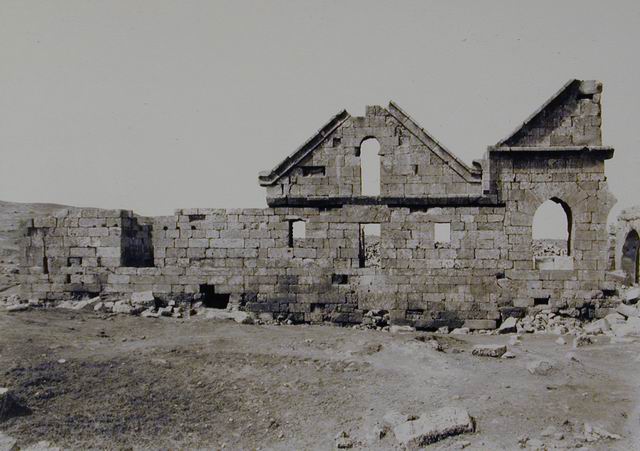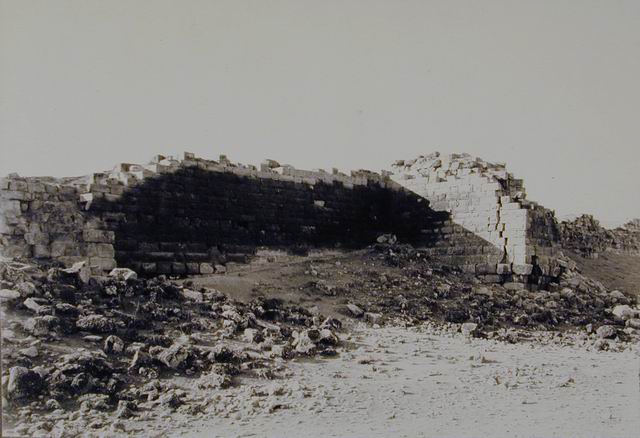An excerpt from the Safar-nama of Nasir Khusraw:
“On Friday the twenty-fifth of Jumada II [December 27, 1046], or the twenty second of-Day, old reckoning, we arrived in Harran. The weather at that time was like the weather in Khurasan at Nawroz [beginning of spring]. From there we went to a town named Qarul, where a young man invited us into his home. When we had come into the house, a Bedouin Arab sixty years old came in and sat down next to me.
“Teach me the Qur'an,” he said. I recited to him the chapter beginning “Say, I fly for refuge unto the Lord of men.” He recited it back to me. When I had said the part that goes “from genii and men,” he asked, “Should I say ‘Have you seen the people’ too?”
“There is no more to this chapter,” I replied. Then he asked, “Which chapter had the part in it about the wood totter?” He did not even know that in the chapter called Tabbat the words “wood carrier” occur, not “wood totter”! That night, no matter how many times I recited the chapter beginning “Say, I fly for refuge unto the Lord of men,” he could not learn it. A sixty-year-old Arab!”
Source: W. Wheeler McIntosh Thackston, ed. trans., Nasir-i Khusraw’s Book of Travels. (Costa Mesa, CA: Mazda Publishers, 2010), 12.
Harran is an ancient town in Upper Mesopotamia in the province of Diyarbakir, Turkey, approximately 40 km / 25 miles South-Southeast of Edessa, or Urfa. It is the Greek “Hai Kharrai,” and Roman “Carrhae,” but has a more ancient history as the “Harranu” of Assyrian texts. In the Old Testament, Harran is mentioned as the dwelling-place of Abraham before he relocated to Palestine (Gen. 12:4-5).
Harran had long been a place of strategic importance due to its location on caravan routes connecting Anatolia and Syria with Iraq and Persia. In Assyrian times, Harran boasted the shrine of the moon god, Sin, which was adorned by the Assyrian kings. Since the time of Alexander the Great, Greek influence became increasingly prominent in the town; the deities worshipped there eventually received Greek names. For the strong Greek imprint, Harran was also referred as Hellenopolis, or “city of the Greeks”. Harran also served as the centre of Melkite and Monophysite Bishops, from the indigenous community, who followed older pagan beliefs and survived Christian disapproval into the Umayyad and Abbasid times.
Harran during the Umayyad Period: Harran came under Arab rule in 18 or 19 AH / 639 or 640 CE and subsequently became one of the most important towns of the district of Diar Modar. It was favoured by the Umayyad caliphs. ‘Umar II (r. 99–101 AH / 717–720 CE) is reported to have transferred a school of medicine from Alexandria to Harran and Marwan II (r. 126–132 AH / 744–750 CE) transferred his capital from Damascus to Harran. It was from Harran that he set out to confront the Abbasid revolutionaries and later fled through it.
Harran during the Abbasid Period: In the early Abbasid period, Harran flourished as a prominent centre of learning for Science. During the reign of the Abbasid caliph Harun al-Rashid (r. 170–193 AH / 786–809 CE), Harran became the centre of translations for Greek texts. Texts on astronomy, mathematics and medicine were translated into Arabic under the supervision of scholar and translator Thabet b. Qurra (d. 288 AH / 901 CE). The town was also provided with a water supply by construction of a canal from the Balikh river. However, Harran is mentioned in the sources primarily as the centre of a persistent strain of paganism. In 215 AH / 830 CE, the Caliph al-Ma’mun is said to have offered the population the choice of conversion to Islam or any of the protected religions, or death; the Harranians, however, survived by arguing that they were the Qur’anic Sabaeans and therefore already “People of the Book” (ahl al-kitab).
In the 4th AH / 10th CE century, the geographer al-Maqdisi described Harran as a pleasant town with a citadel built of stone. The ruined citadel and congregational mosque still survive as evidence of the town’s florescence. The excavations in the 1950s (under the direction of D. S. Rice) revealed the extent of the original walls and their several gates. Harran flourished under the Ayyubids; Salah al-Din enlarged its great mosque. In 658 AH / 1260 CE, Harran was attacked by the army of the Mongol Hülegü. The Mongols later deported the population and destroyed public buildings.
In 14th century CE, despite the successful reign of the Mamluks in Jazira and Harran, Harran remained in ruins and did not revive.
Citation:
“Harran.” Encyclopaedia Iranica Online. 2012.
http://www.iranicaonline.org/articles/harran [accessed September 2013]
Alice C. Hunsberger, Nasir Khusraw, The Ruby of Badakhshan. (I. B. Tauris, London, 2000).
D. S. Rice, "Mediaeval Harran: Studies on its Topography and Monuments," Anatolian Studies 2, 1952, pp. 36-84.
“Harran.” Encyclopaedia of Islam, Second Edition. Brill Online, 2012.
http://referenceworks.brillonline.com/entries/encyclopaedia-of-islam-2/harran-COM_0270?s.num=0&s.f.s2_parent=s.f.book.encyclopaedia-of-islam-2&s.q=Harran [accessed September 2013]


